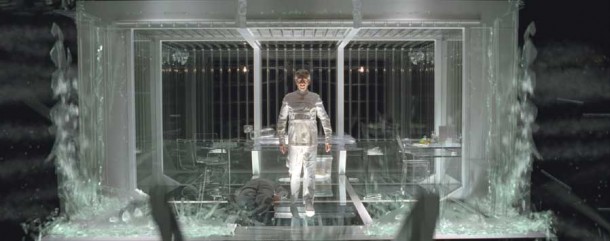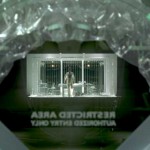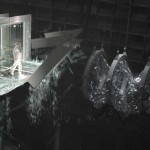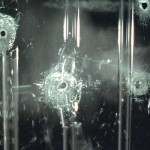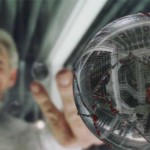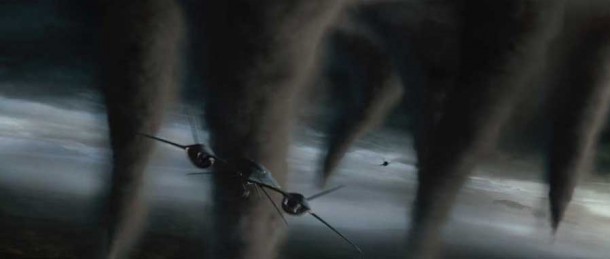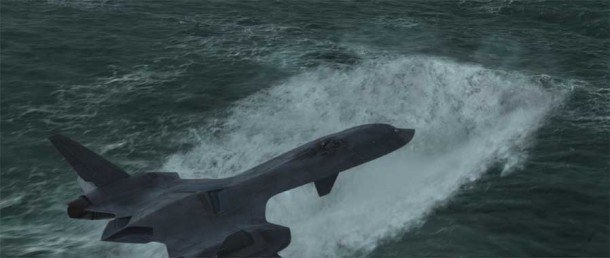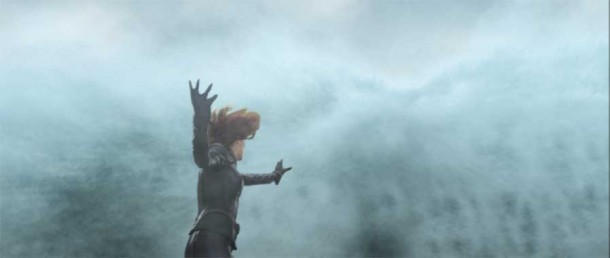Rhythm & Hues on X-MEN 2
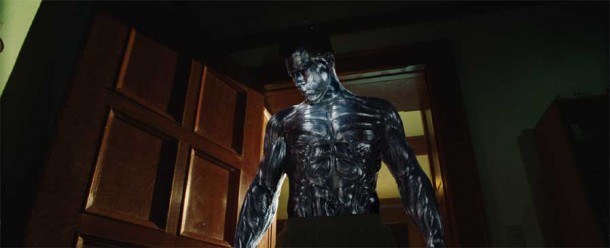
Interview with Mark Rodahl, VFX Supervisor, and Scott Byrd, Publicist at Rhythm & Hues.
CGC: How many shots did you deliver for X2?
We were awarded about 100 shots initially, but eventually our work grew to more than 300. It was 303 to be exact.
CGC: You worked on the Colossus transformation, was this just a 2D effect or is there more than meet the eye?
MARK RODAHL, R&H Digital Effects Supervisor: “There was definitely more than meets the eye. Colossus started out as a Cyber-scan of the actor, Daniel Cudmore, which was match-moved to his performance, then lit and rendered in 3D with a Houdini based reveal effect that did the wiping on of the armor over the top of the actor’s skin. Then it went to 2D in order to integrate it into the scene.”
CGC: We hear you helped Magneto in his dramatic escape from his plastic cell. Do you plead guilty?
RODAHL: “It was tough! We call this the Plastic Prison sequence. It was broken down into parts: first the extraction of the blood from the prison guard, then Magneto forming of the metal spheres to break out of the prison, and finally the cross across the 100 feet chasm of the prison to the outer guard station. For the blood extraction, the guard had to be tracked in 3D. That tracked geometry was then used as an emission source for the particles that were rendered in a volumetric process in order to make it look like blood mist. It was a condensing of a cloud of particles that had to swirl down into a point, then develop into a piece of geometry that essentially did a 3D morph – from cracked, rough surfaces to smooth and shiny. Then they take the shape of the three orbs that Magneto uses to destroy the plastic prison walls. We had to develop a procedure that would take sheets of digital plastic and have them crack and shatter in the 3D environment and then be able to react to whatever was in it: like bouncing or being stopped by the floor, the guard, or falling away into the abyss. From a lighting POV the plastic had to match the set, because it was originally used as a digital set extension then it had to look like realistic plastic breaking. For the crossing to the outer guard station, Magneto transforms one of the orbs into a metallic disc that he steps on. Ian McKellen was really on a motion rig to physically get him from the plastic prison set to the guard set on the stage over what looks like a 100 drop to a cg floor. That was part of a large 3D room that had to built and lit as a digital set extension to show the scale of the prison he’s in.
CGC: I believe you also worked on the dogfight between the X-Jet and the two F-16 jets. How were the tornadoes created and how do they interact with the jets?
RODAHL: I’ll talk about the jets in just a moment, but focusing first on the tornadoes, the interesting aspect of the dog fight sequence is that the entire sequence is all CG. There were no sky, clouds or ground elements to begin with, it was all computer generated as well as the jets, the missiles, and of course the tornadoes. For me that was amazing, because we had nothing, there was no background, no elements. For the tornado, we set up a procedure in which we could animate and light approximately 100 tornadoes over the course of 20 plus shots, so we used Houdini and a number of incredible artists, led by Doug Bloom, our tornado lead. We would take an animation of a tornado and output the surface as a skin, then bring that into Houdini and apply a particle based simulation to get the spinning, roiling effect. One of the tough things on the tornadoes, in looking at the reference footage we used, was that the tornadoes themselves are fairly soft and undefined, but the detail you actually see is in all the debris and dust that is kicked up when the tornadoes actually contact the ground. So in order to compensate for our tornadoes being at 40,000 feet – as was called for in the script – and never touching the ground, we created a more defined and detailed mist layer over the top surface of the tornadoes to mimic reality. The CG jets weave in out thanks to our skillful animators because they had the surfaces of the tornadoes in their animation files and they were animating those too.
CGC: The fighting sequence in the augmentation room between Wolverine and Lady Deathstrike involved the additions of digital claws to the actors for safety reasons. What were the key challenges here? How did you do the tracking?
RODAHL: Tracking wise, we had Cyber-scans of the actors’ hands so we could use those to match move against their performances. The trickiest part was that there was a lot of motion blur, so we essentially had to match slash track the motion blur, not just the position of their hands. That was one of the trickiest part, then the next tricky would be some cg some real claws in it which we had to make look exactly like the other cg claws, so we had to be very precise about the look.
CGC: In the final sequence, we see the dam break and water rushing towards the X-Jet. Was this miniature? CG?
RODAHL: It was both! The establishing shot is a matte painting we did, but all of the dam actually breaking was a humongous miniature that was built and destroyed for the shot by Grant McCune, an independent miniature effects supervisor. We did generate the water rushing around the XJet, and also the shots of the wall of water that Jean Grey forms with her mutant powers, to keep the water from crushing the XJet.
CGC: You also “suspended” the jet into the air near the end. Was this a miniature or full CG?
RODAHL: All of the exterior XJet shots were computer generated. The jet was built in Maya, then animated and lit with our in house softwares Voodoo and Wren.
CGC: What is the work you did on Jean Grey’s transformation?
RODAHL: It was mostly integrating the Cinesite effect – the firey glow- into our effects of cg water, mist and spray.
CGC: You had to work with several other vendors in this project. Tell us how you managed to integrate your production pipeline with your partners in this project?
SCOT BYRD, R& H PUBLICIST: We worked closely with Mike Fink, the production’s overall visual effects supervisor who was really the one most responsible for integrating the work from the various houses, insuring continuity of the end product. Generally, shows like this are broken up into sequences (or often times specific characters) that are awarded in a batch of shots for each sequence to the individual houses. Most of the time we’re not overlapping in the same scene or shot with another VFX provider, although It happens occasionally, (like the Jean Grey transformation scene that we shared with Cinesite LA).
CGC: You also worked on the final white-house sequence. I guess it was not possible to shoot certain scenes around the real thing. Tell us about the work you did on that?
RODAHL: It was a set piece that was built and filmed on the soundstage in Vancouver. The storm throught the window is all 2D elements comped together. We had roiling cloud elements, and rain elements, and bushes which moved in the wind elements all comped together in our in house compositing program, ICY.
CGC: Tell us about your in-house production pipeline? (without necessarily revealing trade secrets).
BYRD: Picture an automotive assembly factory. The concept of our production pipeline is similar – shots are assembled at different stations along an assembly line. To keep track of the flow of shots through the pipeline, we developed PTS – our production tracking system, which tells us what stage a shot is in, who is working on it, along with a number of other features. The shots are created and handled by specialists who focus on a specific aspect of production, such as modeling, animating, lighting, compositing, tracking, matte painting etc. We use a combination of off the shelf and proprietary software. When the company was formed 16 years ago, there wasn’t much to choose from in terms of off the shelf software, so the founders and early employees built their own. Those applications eventually developed into the in house packages we use today, which are supported by a team of 18 or so programmers who can give us software solutions as needed. We’ve also incorporated a number of highly developed off the shelf applications like Houdini and Maya that give us some expanded capabilities. Our hardware is made up primarily of commodity PC’s, with high-end graphics cards and speedy processors running Linux and NT operating systems.
Big thanks to Scot Byrd, everyone at Rhythm & Hues along with 20th Century Fox for helping us make this interview possible.
Respectful thanks to Cinefex Magazine for being such an invaluable research tool.
Related Links

